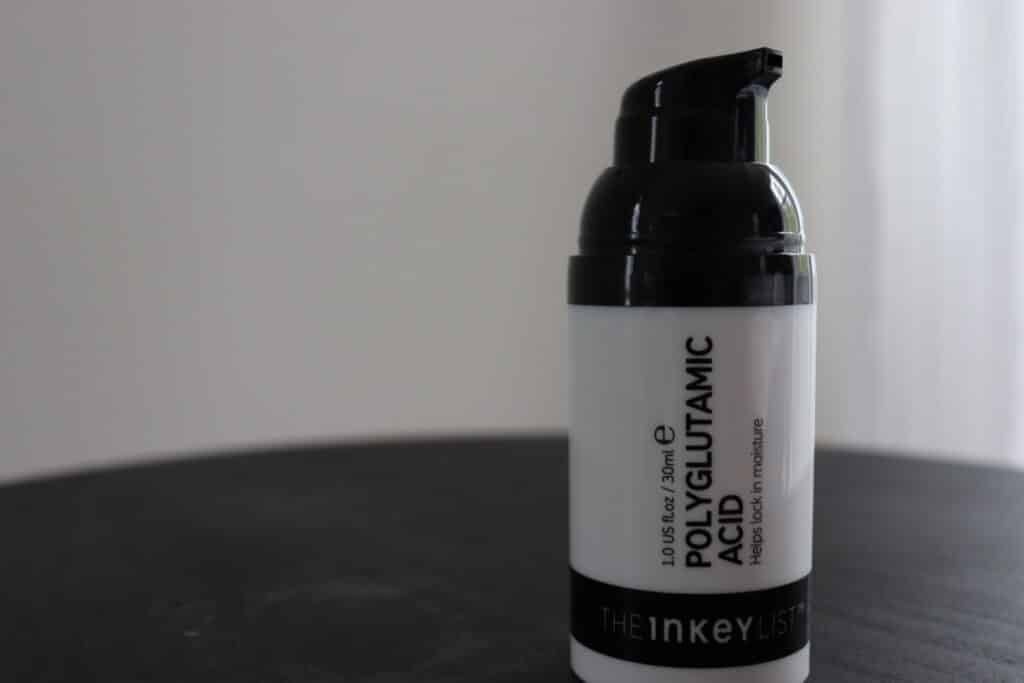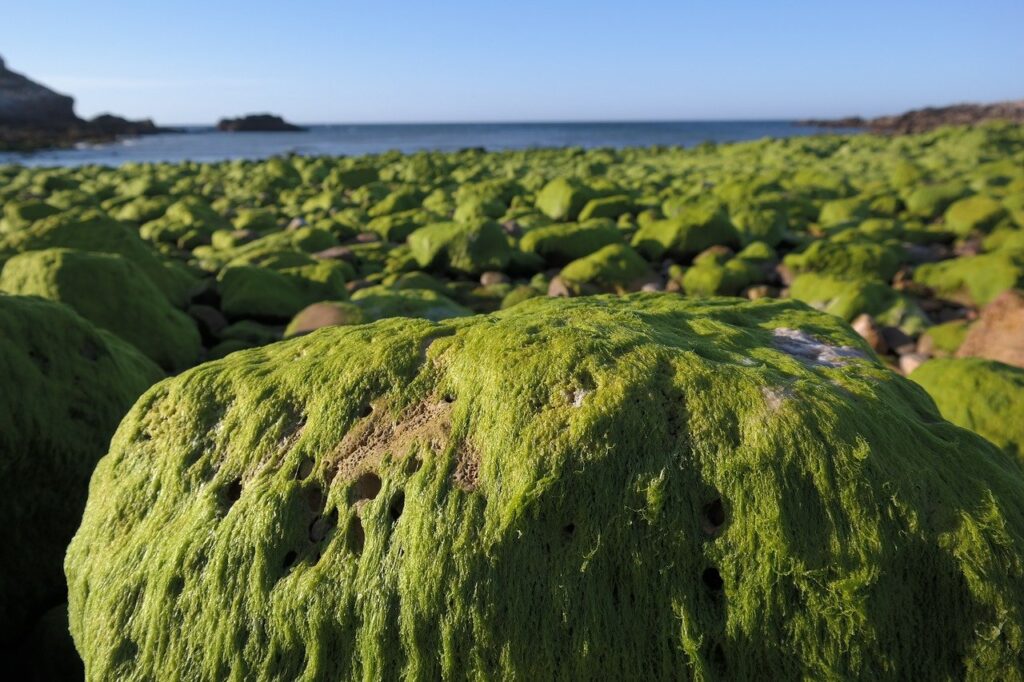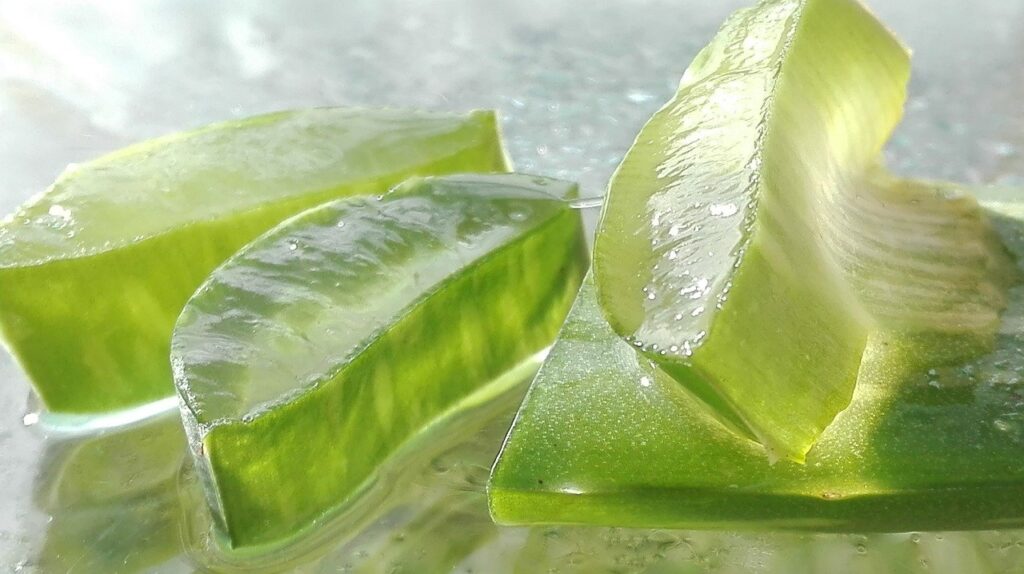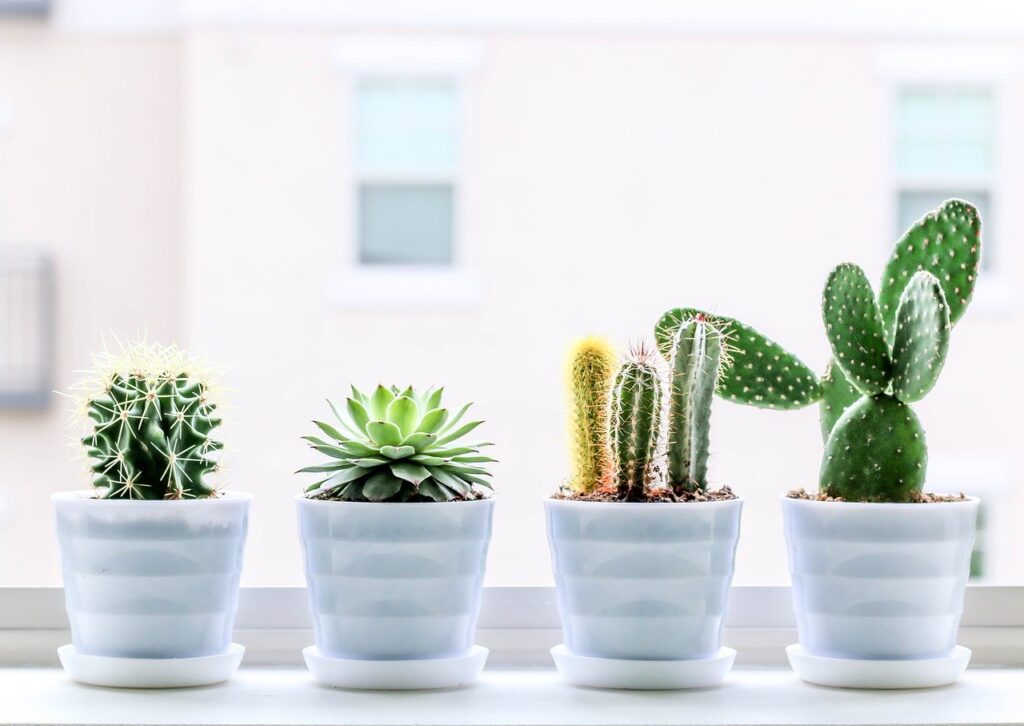written By: Allison Goins, Ph.D. | Published On April 4th, 2022 | Updated on January 9th, 2024
Hyaluronic acid has become synonymous with hydration in skin care product formulations. Hyaluronic acid is a biopolymer that functions as a humectant. Humectants can bind water molecules. It can also penetrate through the epidermis into the dermis, depending on the molecule’s size. These benefits and the raw material’s low cost make it a desirable ingredient for brands and formulators.
About The Author: Allison has a Ph.D. in materials science and engineering. Her research focus area was tissue engineering and regenerative medicine. She studied the way materials like hyaluronic acid interact with your cells in the body and direct their behavior. The hyaluronic acid alternatives for this article were identified by searching clinical study data from Pubmed and Google Scholar to vet the efficacy of the material’s hydration and penetration abilities.
Related Post: A Complete Guide to Hyaluronic Acid
However, there is an increased interest in hyaluronic acid alternatives.
With the increased incorporation of hyaluronic acid in products, some people notice that they experience irritation from it. The skin irritation that some people experience does not mean that hyaluronic acid is an irritant or a product you should avoid. Any chemical can irritate a person’s skin, even the super “biocompatible” ones like hyaluronic acid. So if you can use hyaluronic acid without any problems, you are okay to keep using it.
However, if you have noticed increased irritation and think you have pinpointed hyaluronic acid as the ingredient causing it or just looking to switch up your routine, here are ten great hydrating ingredients that are alternatives to hyaluronic acid.
Synthetically Sourced Hyaluronic Acid Alternatives
Glycerin

Glycerin or glycerol is easily the most overlooked hydrating ingredient. Before hyaluronic acid was the trendy ingredient, glycerin was the workhorse. Even today, many hydrating formulations include both glycerin and hyaluronic acid.
Glycerin is a humectant like hyaluronic acid. It binds to water molecules and helps provide hydration to the stratum corneum and lower layers of the skin.
Glycerin is such an effective hydrator to the lower layers of the skin many clinical studies of new hydrating ingredients use it as a positive control. A positive control is a well-established and proven molecule.
There is a lot of evidence to support glycerin’s ability to penetrate through the stratum corneum and into the dermis. If you are looking for a product that hydrates the lower layers of your skin like sodium hyaluronate, glycerin is a good alternative.
Some of the other benefits of glycerin include:
- Enhances the penetration of other active ingredients
- Improves skin hydration and reduces the appearance of fine lines and wrinkles
- Mimics the skin’s natural moisturizing factor
If you are going to use glycerin in your routine, it is good to use it on damp skin and make sure there is water present for the glycerin molecules to grab and pull into your skin.
It can also be beneficial to apply it after actives to enhance their penetration. One limitation that glycerin has when compared to hyaluronic acid.
Related Post: Using Glycerin for Skin: Glycerin vs. Hyaluronic Acid
Products Containing Glycerin:
The Heritage Store Rosewater Toner is an affordable toner that includes glycerin as a primary ingredient.
Polyglutamic Acid

Polyglutamic acid is another biopolymer. Specifically, it is a polypeptide, which means it is a lot of protein molecules bonded together. The protein molecules bonded together to make it a high molecular weight molecule.
The high molecular weight polymer behaves similarly to hyaluronic acid.
Its hydrophilic, water-loving backbone allows it to function as a humectant and grab onto water molecules from its environment. It is sometimes marketed as a more effective hydrator because it is a larger molecule. The increased size of the polyglutamic acid molecule means that it can hold more water.
While polyglutamic acid may be a more effective humectant than hyaluronic acid because it has a higher affinity for water, due to its larger size, also means it cannot penetrate through the stratum corneum.
Formulations with polyglutamic acid are most similar to a high molecular hyaluronic acid. It is an excellent humectant and occlusive hybrid material, but it will not penetrate your stratum corneum.
Some of the other benefits of polyglutamic acid include:
- Reduces the appearance of fine lines and wrinkles
If you are going to use polyglutamic acid in your skincare routine, it should be after your actives so that you do not impede their penetration into your skin. Additionally, applying a toner after application will help provide the polyglutamic acid with additional moisture to absorb.
Related Post: Polyglutamic Acid Serum: Is it a Must Have in Your Routine?
Products Containing Polyglutamic Acid:
The Inkey List Polyglutamic Acid Serum is an affordable option.
Naturally Sourced Hyaluronic Acid Alternatives
Alpha Glucan and Beta Glucan

Alpha glucan and beta-glucan are two sugar molecule building blocks of other hydrators like mucin and alginate.
In addition to being components of natural materials, they are also synthesized in laboratories and used in skincare formulations as standalone ingredients. The two individual sugar molecules function similarly as components in larger molecules. However, they are not able to hold as much water.
Although they can not have as much water, one of the benefits of being smaller means they can penetrate the skin deeper. Some of their other benefits include:
- Reduced the appearance of fine lines and wrinkles
- Antioxidant properties, which means it can be additional protection from the sun and UV rays
- They also have emollient properties to soothe dry areas and aid in barrier repair.
These molecules are good alternatives to hyaluronic acid salts and smaller hyaluronic acid molecules.
If you want to add a serum with alpha or beta-glucan into your routine, it should be applied on damp skin after your toner so that there are water molecules to bond. It will not block actives from penetration, so it does not need to be a last step in the routine. Paula’s Choice Redness Relief Repairing Serum contains beta-glucan.
Mucin

Mucin is a popular K beauty ingredient permeating Western beauty as K beauty, in general, is becoming more and more popular. It is a proteoglycan.
Animals secrete mucin to form a protective mucus around tissues. Proteoglycans are large molecules that combine proteins and sugar molecules, glycans. The protective barrier created by the mucus prevents tissues from damage or protects them as cells repair a damaged area.
In skin care formulations, mucin behaves like an occlusive.
It creates a protective barrier that water cannot penetrate on top of the stratum corneum. It seals in moisture and other actives that hydrate and repair the skin barrier. Mucin is often incorporated into skincare formulations through snail secretion filtrate.
Some of the other benefits of the mucin and the snail secretion filtrate include:
- Allantoin, which is a moisturizer
- Glycolic acid which can be an exfoliant and humectant
- Some antimicrobial molecules like copper can prevent microbe growth
Related Post: Snail Slime in Skincare: The Secret to Flawless Skin?
It is essential to mention that extracts can differ from batch to batch when used in skincare products.
So it is hard to say you are getting the same level or any of the other components of an extract in your product. However, mucin is an excellent alternative to higher molecular weight hyaluronic acid if a product contains mucin. It will sit on the top layer of skin and grab and hold on to moisture from the atmosphere to continually provide water to the skin.
If you are going to use it in your skincare routine, it should be in your last step, and it may need to be washed off, so double-check the instructions on your product.
Products that Contain Mucin
Peach and Lily make a barrier repair mask that contains mucin.
Alginate

While alginate is structurally and functionally very similar to the other hydrators discussed in this article, alginate comes from a botanical source.
Alginate is a biopolymer that is isolated from algae. The class of polymers that alginate falls in are called polysaccharides.
Polysaccharide means many sugars. Sugar molecules are large molecules with a high affinity for water. When bonded together, they form polysaccharides that attract and hold onto water.
Alginate’s ability to retain and attract moisture makes it a humectant.
Related Post: What is a HydroJelly Mask?
Like hyaluronic acid, alginate can come in a larger polysaccharide form or a salt form.
Sodium alginate is the primary ingredient in the HydrojellyⓇ face masks popular in esthetics studios. There is no evidence that alginate has other biologically active benefits, but it is an effective hydrator. Alginate is an excellent direct alternative to hyaluronic acid because it can penetrate the stratum corneum and hydrate down to the dermis. Because it is so similar to hyaluronic acid, you can use it the same way if you are using it in your skincare routine.
Honey

Honey is another naturally occurring polysaccharide like alginate. The sugar molecules in honey attract and retain water, making it a humectant. Like high molecular weight hyaluronic acid and alginate, honey sits on the top layer of skin and serves as a moisture reservoir.
It cannot penetrate through the stratum corneum and hydrate the dermis. Some other benefits of honey include:
- Honey can also contain vitamins and nutrients that have antioxidant properties
- There is also evidence that honey has antimicrobial properties
Because honey is a large viscous polysaccharide, it behaves like a higher molecular weight hyaluronic acid.
Honey only sits on the skin’s surface. It is not an alternative to a lower molecular weight hyaluronic acid because it can not penetrate the stratum corneum and hydrate the dermis.
If you want to incorporate honey into your routine as a hyaluronic acid alternative, it is best to use it as a wash-off mask.
Related Post: Honey in Skincare: Should it be in Your Routine?
Products that Contain Honey:
Peach and Lily make the Citrus-Honey Aqua Glow Moisturizer that can be used as the last step in your skincare routine.
Hydrocolloidal Oat

Hydrocolloids are materials that turn into gels when they contact water.
Specifically, hydrocolloidal oat is made from polysaccharides found in oats. These large sugar molecule-based biopolymers have properties similar to the other polysaccharide-based hyaluronic acid alternatives. As opposed to just putting oatmeal on your body like you might have done as a kid for chickenpox, the oat byproducts being used to make a hydrocolloid gel give the oats the ability to retain more water.
Some of the other benefits of hydrocolloidal oat include:
- Soothing to a damaged skin barrier
Unlike some of the other hydrators on this list that are humectants, hydrocolloids do not attract water.
They hold onto water that is already present. Hydrocolloid oat is considered an emollient because it keeps water on the part of the skin it was applied to and softens and rehydrates the area. If you use a hydrocolloid oat as a hydrating product, you want to make sure you put water or toner on before and after application to make the emollient effective.
Products that Contain Colloidal Oat:
The Aveeno Calm+Restore Oat Gel Moisturizer is a great hydrocolloidal oat-containing moisturizer.
Related Post: Colloidal Oatmeal Skin Benefits: Should It Be In Your Skincare Routine?
Aloe Vera

Aloe vera is hydrating because it contains mainly water and is a polysaccharide.
It is a plant which means it is another humectant from a botanical source like alginate. The sugar molecules in aloe vera behave just like the other polysaccharides on this list. Their ability to bind water molecules makes them a moisture reservoir that sits on top of the skin and keeps it hydrated.
Other benefits of aloe vera include:
- The extract can contain antioxidant vitamins and minerals that offer UV protection
- There is limited evidence that some of the glycoproteins can encourage cell proliferation and collagen production
Because aloe vera-containing products are typically formulated with pulp or extract, it is essential to note the same components may not be present in each product.
Extracts can be highly variable from batch to batch.
However, if you would like to include aloe vera in your skincare routine, It can be used as an alternative to lower molecular weight hyaluronic acids. Aloe vera is used in most formulations as an extract which means it has been broken down into smaller-sized molecules.
Related Post: Benefits of Aloe Vera for the Skin
Cactus Water

Cactus water is hydrating because it contains moisture, the ultimate hydrating ingredient.
However, the cactus extract has minerals and nutrients called electrolytes. Unlike the other hydrators on the list, electrolytes use a different mechanism for hydrating the skin. Electrolytes create a chemical gradient and allow you to hold onto water more.
There is not much evidence that cactus water has any other benefits for the skin.
Although it does not use the exact hydrating mechanism as hyaluronic acid, it can assist in the hydration of the lower layers of skin like lower molecular weight hyaluronic acids.
If you plan to use a cactus water product as a hyaluronic acid alternative in your routine you should apply it after your toner before a moisturizing cream.
Products that Contain Cactus Water:
Boscia has a cactus water moisturizer.
Calendula

Calendula is extracted from marigolds, and one of the components of the calendula extract is polysaccharides. Polysaccharides are humectants with the ability to attract and retain water molecules.
Some of the other benefits of Calendula include:
- Some calendula extracts contain vitamins and minerals with antioxidant properties
- Used in would healing applications to promote tissue regeneration
Because calendula comes in extract form, the polysaccharides in it have been broken down and turned into smaller sugar molecules.
So this hyaluronic acid alternative is most similar to the hyaluronic acid salts, with lower molecular weight hyaluronic acid. If you plan to use it in your routine, you want to use it before or after a toner step to give the sugar molecules water to retain. Keihl’s has an entire line of products infused with Calendula extract.
Hyaluronic acid is a great hydrating ingredient, and there is definitely a justified reason for it to be in so many products. However, if you are wanting to try something different check out a product that has one of these great hyaluronic acid alternatives in it. If you have a favorite hydrating ingredient that isn’t included in the list, let me know. Or if you have a favorite product that contains one of these ingredients, let me know.

1 Comment